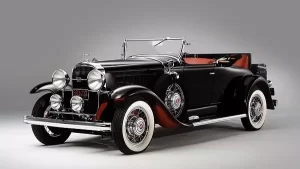The means of transportation have evolved significantly over the centuries, progressing from simple and manual methods to sophisticated and technologically advanced modes of transportation. Here’s an overview of the evolution of transportation from the past to the present:
- Walking and Animal Transport (Prehistoric to Ancient Times):
- Walking: The earliest form of transportation was walking, which humans have used for thousands of years.
- Animal Transport: Domestication of animals, such as horses, camels, and oxen, enabled the development of animal-drawn carts and sledges.
- Water Transport (Ancient Times):
- Boats and Canoes: The use of watercraft for transport dates back to ancient times. Boats and canoes were initially used for fishing and later evolved for trade and exploration.
- Wheeled Vehicles (Ancient Times):
- Chariots: Wheeled vehicles, such as chariots, were used in ancient civilizations like Mesopotamia and Egypt for both military and civilian transport.
- Horse-Drawn Carriages (Medieval to Early Modern Period):
- Carriages: The use of horse-drawn carriages became more widespread in medieval and early modern times, providing a means of transportation for the affluent.
- Steam Power (19th Century):
- Steam Locomotives: The development of steam power led to the creation of steam locomotives, revolutionizing land transportation with the introduction of railways.
- Steamships: Steam engines were also applied to ships, leading to faster and more efficient sea transportation.
- Internal Combustion Engine (Late 19th to Early 20th Century):
- Automobiles: The invention of the internal combustion engine in the late 19th century led to the mass production of automobiles, transforming personal and commercial transportation.
- Aviation (Early to Mid-20th Century):
- Airplanes: The Wright brothers’ successful flight in 1903 marked the beginning of aviation. Airplanes became a major mode of long-distance travel and freight transport.
- Mass Transit (20th Century):
- Subways and Trams: Mass transit systems, including subways and trams, were developed in major cities to address urban transportation needs.
- Buses: Motorized buses became a common form of public transportation in urban and rural areas.
- Space Travel (20th Century):
- Spacecraft: The mid-20th century saw the development of spacecraft, leading to human space exploration and satellite deployment.
- High-Speed Rail and Maglev (Late 20th Century to Present):
- High-Speed Rail: Modern high-speed rail networks, particularly in countries like Japan and Europe, provide rapid transit between cities.
- Maglev: Magnetic levitation (maglev) trains use magnetic fields to suspend and propel the train without direct contact with the tracks.
- Electric and Hybrid Vehicles (21st Century):
- Electric Cars: With a focus on sustainability, electric cars and hybrid vehicles have gained popularity, offering alternatives to traditional internal combustion engine vehicles.
- Autonomous Vehicles and Hyperloop (Emerging Technologies):
- Autonomous Vehicles: The development of self-driving technology is paving the way for autonomous vehicles, potentially changing the nature of transportation.
- Hyperloop: Proposed by Elon Musk, the Hyperloop is a conceptual high-speed transportation system using pressurized capsules in low-pressure tubes.
The means of transportation continue to evolve, with ongoing developments in electric and autonomous vehicles, sustainable transportation options, and advancements in aerospace technology.




